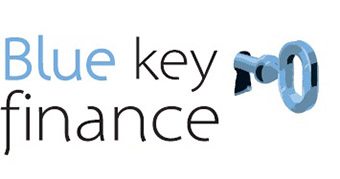How to reduce your tax with an investment property
At Blue Key Finance we specialise in investor finance and we are surprised to still hear that potential investors don’t realise the full benefits of investment property ownership and how affordable owning one can be. In this article we’ll touch on some FAQ’s that pop up in our interviews with investors especially in the area of helping you reduce your tax.
There are plenty of perks that come with owning an investment property. There’s the regular rental income, the potential for capital growth and then, of course, the tax benefits. You could reduce your tax by as much as $180 per week when you take into account both depreciation and other deductions.
The tax advantages can make a big difference to your bottom line and ultimately help you reduce your tax. Getting it right could turn a negatively geared investment property—one where the costs of paying for the property outweigh the rental income—into one that is cash flow positive. This means that the total income you receive which includes your tax refund is more than the associated expenses.
Depreciation claims will help you reduce your tax
Investment property owners can only claim depreciation on the ‘cost to build’ (also known as capital works deductions) where construction was completed after September 15 1987. The annual deduction you can claim to the tax office is 2.5% of the builder’s historical construction cost for up to 40 years. So, on a new property these deductions can be claimed for the full 40 years. Owners of older properties constructed after September 15, 1987, can claim only up to 40 years since construction finished. For example, if an investment property is 10 years old, the new owner will have 30 years’ worth of such deductions available.
Depreciation deductions are also available for the fixtures and fittings found within the property. Examples include carpets, hot water systems, air conditioners and blinds. These deductions are based on the condition and the quality of the asset, and are calculated based on the effective life the tax office supplies for each asset. Newer properties will generally attract higher depreciation deductions than older properties as the fixtures and fitting items will have a higher starting value. To determine your annual deductions on the fixtures and fittings you would hire the services of a quantity surveyor who would prepare a ‘Tax Depreciation Schedule’ that you can then provide your Accountant each time you prepare your tax returns.
Repairs or improvements?
It is important to understand the difference between repairs and maintenance and a renovation as these categories determine whether you can claim the expense in the year incurred or it’s to be depreciated as a capital works deduction.
Repairs typically involve restoring an item to its original state: e.g., fixing part of a fence damaged during a storm. Maintenance is defined as work that prevents deterioration, such as servicing an air conditioner. Any work done to a property that improves the condition or value of an item beyond its original state will be considered as a capital improvement and thus depreciated as a capital works deduction.
Missed opportunities
Often when investors prepare their own tax returns, they overlook quite a lot of depreciable assets resulting in less of a tax return, sometimes up to $3,000 less. Although many assets may not have a high depreciable value, they may be eligible to be written off immediately or added to a low-value pool and depreciated at a higher rate. Any asset valued at $300 or less is eligible for an immediate write-off. Assets worth more than $300 but that have a depreciable value of $1,000 or less can be added to a low value pool and depreciated at 18.75% in the first financial year. The balance can be claimed at 37.5% from the second year onwards.
This is why we highly recommend you hire the services of a quantity surveyor for a fee of about $450 and that way you can be rest assured no assets will be overlooked and all assets will be claimed, thus allowing you to reduce your tax further.
Pay as you go
Investors are often unaware that they don’t need to wait all year to benefit from depreciation deductions.
Since July 2000, an investor can complete a PAYG withholding variation form which allows them to vary the amount of tax withheld by their employer in each pay to anticipate their tax liabilities.
For example, once the Australian Tax Office approves the PAYG withholding variation request, and where the investor anticipates a $7,000 tax refund because of the investment property purchase they would instead receive an additional $134 per week in their regular weekly pay instead of waiting for it when they submit their tax returns. Having access to extra money during the year makes it easier to manage cash flow. This additional income also gives the owner the option to invest extra money or reduce loan liabilities, or leave it in a savings offset account helping reduce the interest on their normal owner occupied home loan.
If you haven’t already, click here to download our FREE E-Book on “Investors” or email us instead and we’ll end it to you within 24 hours.



Leave a Reply
Want to join the discussion?Feel free to contribute!